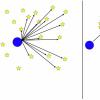To Induce fission:
+ NAD+: Nicotinamide-&-Ribose-&-exercise, Niagen NR, Pomegranate, Fisetin, Dynveo_GSE
+ SIRT1: Cocoa, Hydroxytyrosol, Pterostilbene, Resveratrol, Myricetin, Luteolin, Silymarin
To Induce autophagy:
- TORC1: Rapamycin, EGCG, Fisetin, Metformin, Epimedium, Vit-D, Spermidine, Garcinol
Fisetin both increases NAD+ and inhibits TORC1
+ Tor-independent-autophagy: EGCG, Spermidine, Carbamazepine, Valporic_acid
EGCG has TOR_dependant and TOR_independent autophagy pathways
Carbamazepine & Valporic_acid are anti-seizure drugs
+ PINK/Parkin (tag mitos for elimination): Cinnamon, Rosemary_extract
+ Other: Fasting, Coffee/tea, Ursolic Ac, Ketones
Avoid: These interfere with fission + autophagy:
- autophagy: Leucine, Insulin, (perhaps other bodybuilding supplements could go here)
- fission: Sulforaphane (-Drp1)
+ fusion: Stearic acid, PQQ, AMPK_activators
AMPK_activators: AICAR, Actv-AMP (jiaogulan), Lithium, Naringin, Berberine, Quercetin
+ Membrane potential (MP): Creatine, anti-oxidants (higher MP protects mitos)
Antioxidants: CoQ10, C60, vit-C, Astaxanthin
Astaxanthin, Trehalose: +autophagy but also +fusion
Trehalose is theoretically destroyed by digestion, but seems to have effects
The above is for fission & autophagy. For fusion & biogenesis stearic acid seems to be great for a fast restoration. Other things to "avoid" during fission may also enhance fusion. SIRT1 activation is required for both fission and fusion, so the SIRT1 enhancers could be useful both times.
The following are my results so far:
Experiment #1 - very strong effects
Experiment #2 - recommended protocol for beginners, worked great
Experiment #4 - added a fission inhibitor and an autophagy inhibitor. Totally prevented any effect
Details:
Day 1 promoting fission & autophagy, at 8 AM I took
NAD+ promoter Nicotinamide 2 g & ribose 5 g
NAD+ promoter Niagen NR 200 mg
NAD+ promoter Pomegranate (1g Ellagic acid)
NAD+ promoter Dynveo_GSC 200 mg (grape seed extract)
SIRT1 promoter Pterostilbene 100 mg
SIRT1 promoter Resveratrol 500 mg (and DHEA 75mg, to prevent resveratrol side-effects per Turnbuckle)
At 9 AM I tried to exercise but couldn't do much
Day 2 and 3 just rested - day 2 protocols were still new
Result I was too weak to exercise much. I felt sick and slept a lot. Wife said I looked sick. It took 48 hrs to recover. I believer the added SIRT1 promoters, or the extra NAD+ promoters (or both) caused a lot of fission and autophagy, I can't prove it.
Day 1 promoting fission & autophagy, at 8 AM I took
NAD+ promoters nicotinamide 2g and ribose 5g
NAD+ promoter At 9 AM I exercised hard for 1 hr
NAD+ promoter At 11 AM I took enough Pomegranate extract to have 1g ellagic acid
Day 2 promoting fusion & biogenesis, at 8 AM I took
Fusion promoter Stearic acid 10g
Antioxidant (autophagy inhibitor) Vit-C crystals 2g
Result - went for a very fast walk with frequent sprinting and sustained HR of 170-180 bpm for 30 min. Felt great.
Day 1 promoting fission & autophagy, at 8 AM I took
NAD+ promoter Nicotinamide 2g & Ribose 5g (8AM),
NAD+ promoter Exercise 9AM-10AM,
NAD+ promoter Pomegranate extract 1g at 11AM
PINK/Parkin promoter Cinnamon 1/2 tsp at 11AM
Effect I experienced low blood pressure all morning after the TMG & lysine
3 PM I feel completely recovered already, expecting to feel great again after stearic acid tomorrow
Day 2 promoting fusion and autophagy,
+ Stemcell replication Curmumin (Ultra-Cur) 2.4 g 7 AM
Antioxidant (inhibit autophagy) Vit-C crystals 2 g 8 AM
Fusion promoter stearic acid 10g 8:30 AM
Treadmill walk 9 AM to 10 AM
Biogenesis promoter PQQ 20 mg 11 AM
Biogenesis promoter Sulforaphane 60 mg 11 AM
After lunch Very sleepy. Slept for 2 hours
4 PM Arms and shoulders unusually sore
5 PM Ran an errand. Felt like I was walking on "spring" shoes. Felt good to walk very fast.
Day 1 promoting fission & autophagy, at 8 AM I took
NAD+ promoter Nicotinamide 2 g & Ribose 5 g
NAD+ promoter Sulforaphane 6 0mg (BroccoMax) [Mistake--although Sulforaphane is likely a NAD+ promoter, it is also a very strong fission inhibitor]
At 8:30 AM TMG 1 g & lysine 2 g (my 2nd attempt at Turnbuckle atomic protocol)
NAD+ promoter At 9 AM exercised hard, and drank my sport drink containing leucine [2nd mistake--leucine is a strong autophagy inhibitor}
Result: Felt no effects. The TMG & lysine did not lower my BP like in experiment #3. Inhibiting fission (sulforaphane) and autophagy (leucine) prevented any noticeable result--demonstrating that fission and autophagy are likely responsible for feeling wiped out.
Edited by RWhigham, 19 July 2017 - 10:49 PM.
































 This topic is locked
This topic is locked
































